The ultimate list of email do’s and don’ts

Why are us marketers obsessed with email?
Well, it’s not just us. More than 280 billion emails were received and sent daily in 2018. There are an estimated 5.5 billion active email accounts globally in 2019.
More than 2 billion people worldwide check their inboxes through mobile devices like smartphones. In the U.S., over 250 million people check email at least once a month.
It goes without saying that email marketing is dependent on technology. And as technology changes, email marketing best practices also change—often with little to no warning.
If you feel like you’re no longer up-to-date on the latest email dos and don’ts, we’re here to help. Let’s go through the list.
Subscriber list building
Putting together a list of subscribers is the first step to setting up email marketing.
Below are six email do’s and don’ts to keep in mind as you start.
1. DO use a reliable email service provider
As a marketer, you require advanced bulk sending functionalities and a larger set of tools to create your email campaigns.
Many email service providers specialize in digital marketing. Reputable email marketing platforms can provide you with an authenticated sending domain and make it more likely that your emails appear in inboxes (rather than going straight to spam folders).
2. DO comply with the CAN-SPAM Act
Some easy actions to take: Using a trustworthy “from” name, having a functional reply-to address, and displaying your company’s office address. All of these will help you avoid legal troubles brought on by not abiding by the CAN-SPAM Act.
As a bonus, these compliance acts also aid in increasing email deliverability.
3. DO make it easy for people to unsubscribe
It’s important to have an obvious unsubscribe option linked somewhere in each of your emails. Subscribers should never find it difficult to unsubscribe.
You may set up a triggered email to ask why they left, but don’t make feedback a requirement.
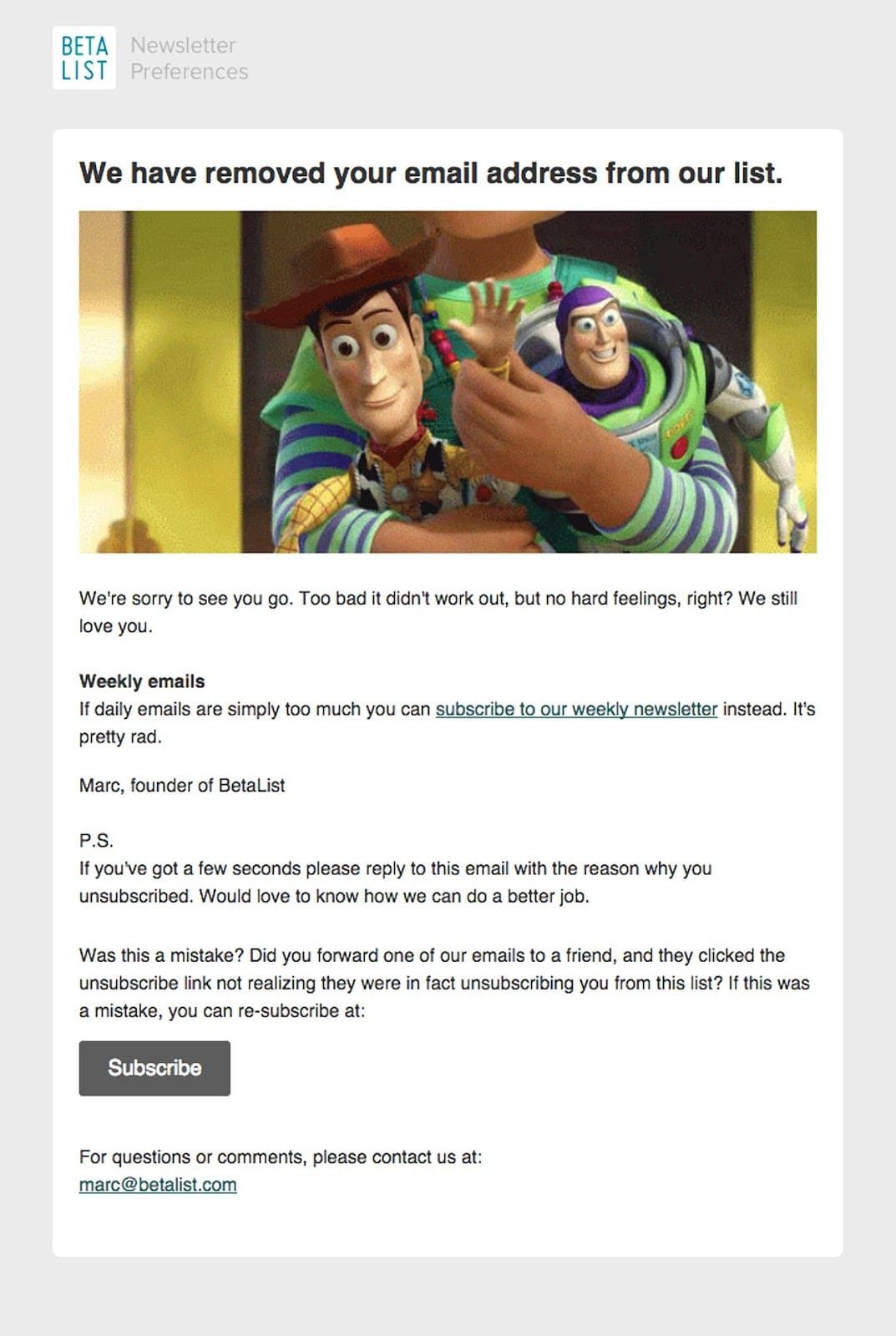
Source: Really Good Emails
4. DON’T purchase an email list
This is a golden rule. When you buy an email list instead of seeking out and earning each lead, you make your work more difficult.
Bought email addresses are strangers to your brand. You won’t be able to target and nurture these leads efficiently.
Organic lists grow naturally, and you’ll most likely have audience data available before or upon subscription. Why waste time on pre-packaged lists? You could spend the same number of hours running a legitimate contest or referral program.
5. DON’T skip the double opt-in
Sometimes called the confirmed opt-in, this tactic makes sure new subscribers actually want to be part of your list before your email marketing platform counts them as campaign recipients.
Typically, the second opt-in is an email asking for assurance that your new subscriber wants your emails delivered to their inbox. After they confirm, it’s common to follow up with a welcome series of emails to cement the subscriber’s decision.
6. DON’T use a do-not-reply email
Messages sent from a do-not-reply address don’t specifically violate the E.U. General Data Protection Regulation (GDPR) or the U.S. CAN-SPAM Act. However, they may hinder you from operating in full compliance.
For example, the GPDR requires email marketers to accept informational requests from subscribers about the data you collect. If you execute campaigns with a do-not-reply address without setting a different reply-to email address, you could miss requests.
Setting up marketing campaigns
After you’ve assembled an email list, it’s time to lay the groundwork for your campaigns.
The below email dos and don’ts haven’t changed in years, but in case you don’t know these, we’ll go through them one-by-one.
1. DO set triggers for automated marketing emails
You should support customer journeys through automating emails. Prioritize automating marketing campaigns that perform well across the board.
The welcome email is the number one example of an ideal triggered message. Emails of this kind can coax out open rates that are 50 percent higher than average.
Email automation can boost key performance indicators (KPIs) and free up time and energy for other email marketing tasks that require an extra dose of creativity and productivity.
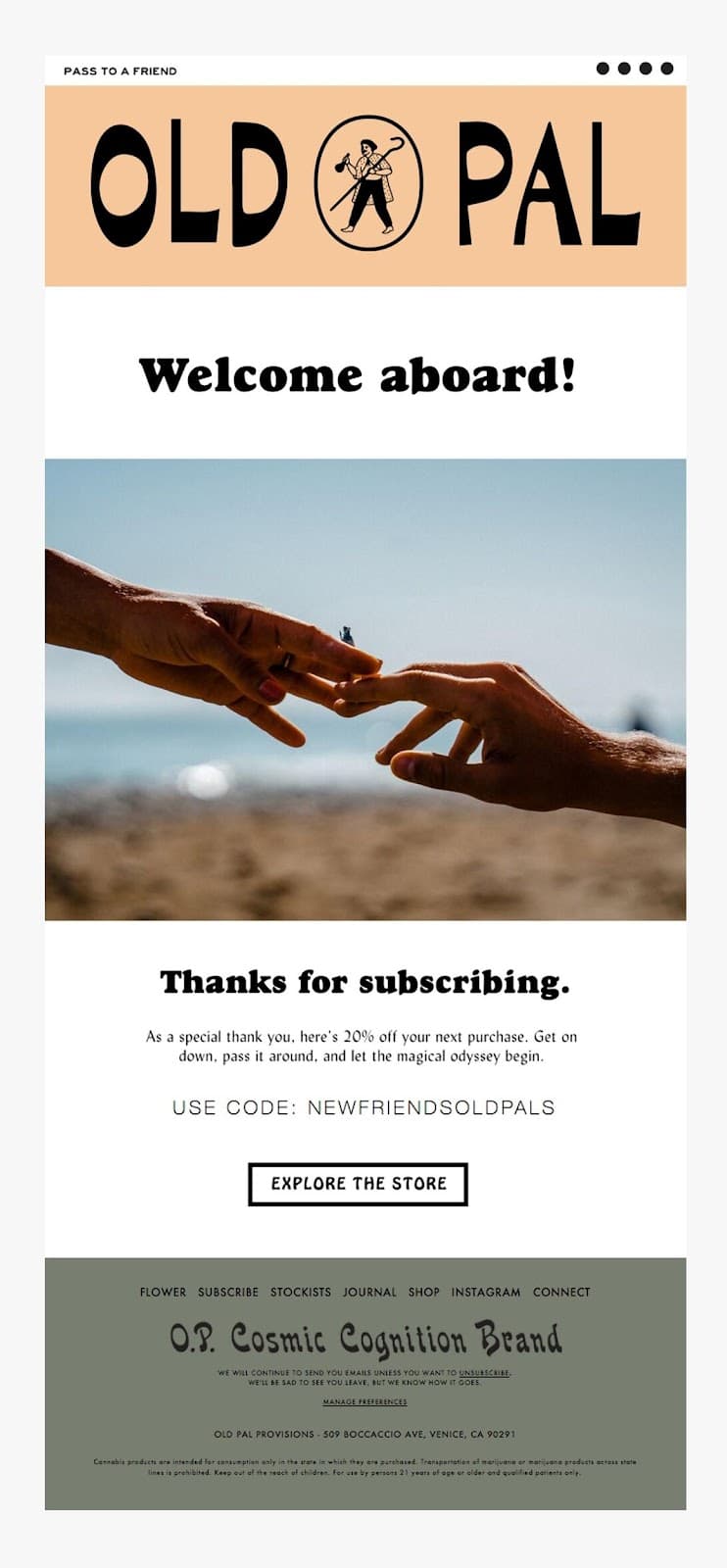
Source: Really Good Emails
2. DO use segmentation
The first step to personalization—which we’ll discuss in more detail later—is segmentation.
Consider segmenting your email list based on typical demographics like age, gender, or location. These are the details you bake into a preference center that subscribers can fill in.
As your brand matures, your marketing strategy may grow along with it. You can implement further segmentation based on website behavior, purchase history, and more.
3. DON’T send to all subscribers at the same time
Common sense supports this notion. Your subscribers are different from each other. So how could it ever be a great idea to send all your emails to all your subscribers at the same time?
Each of your segments will have a peak time that increases the likelihood of engagement. Follow those instead. If you’re not sure, conduct A/B testing to see how your emails perform at different times of the day.
4. DON’T ignore email marketing reporting or analytics
Access to metrics is one of the key advantages of using an email marketing platform. Email analytics and insights reporting point out where and how you need to improve as a marketer.
With real-time stats, you can even make adjustments to your process mid-campaign. Be kind to your marketing goals, and keep tabs on your KPIs.
Content do's and don'ts
When you’ve got an email list and campaign outlines on the ready, all that’s left is content.
These email do’s and don’t are by no means unique. Marketing email best practices are an evergreen topic in our industry.
Let’s go through some noteworthy email writing tips and discuss them.
1. DO write complementary email titles and preheader text
A strategic subject line grabs attention and compels someone to read the entire message. Good email titles can dramatically improve your open rates and potentially boost other metrics as a result.
Sometimes called a “Johnson Box,” preheader text is what you see after the email title in the default inbox view. There’s not much space to write preheaders—only 100 characters on average. Combining it with a solid email title is a good way to strengthen both.
It’s like a literary one-two punch.
2. DO use personalization and dynamic content
Did you know that personalized email titles may increase email open rates by over 25 percent? As email do’s and don’ts go, this one has been set in stone since its introduction to the industry.
With personalization through dynamic content in general, ROI can shoot up by more than 120 percent. Email click-to-open rates improve by more than 70 percent, too.
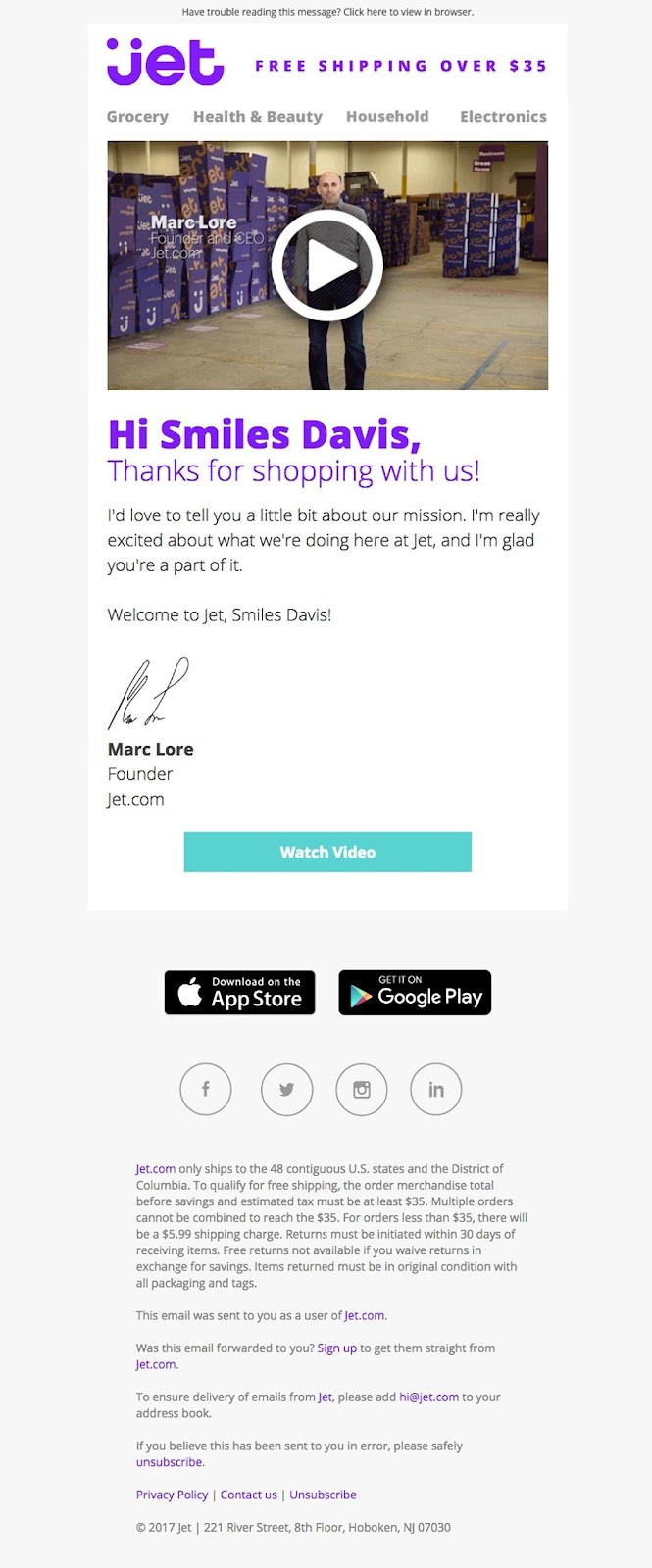
Source: Really Good Emails
3. DO include a conspicuous call-to-action (CTA)
Every email requires a CTA. How else would you measure the success of your email campaigns? Always have the desired subscriber action in mind.
For more oomph, you can use a button instead of an ordinary hyperlink. This technique can increase an email’s click-through rate by more than 25 percent.
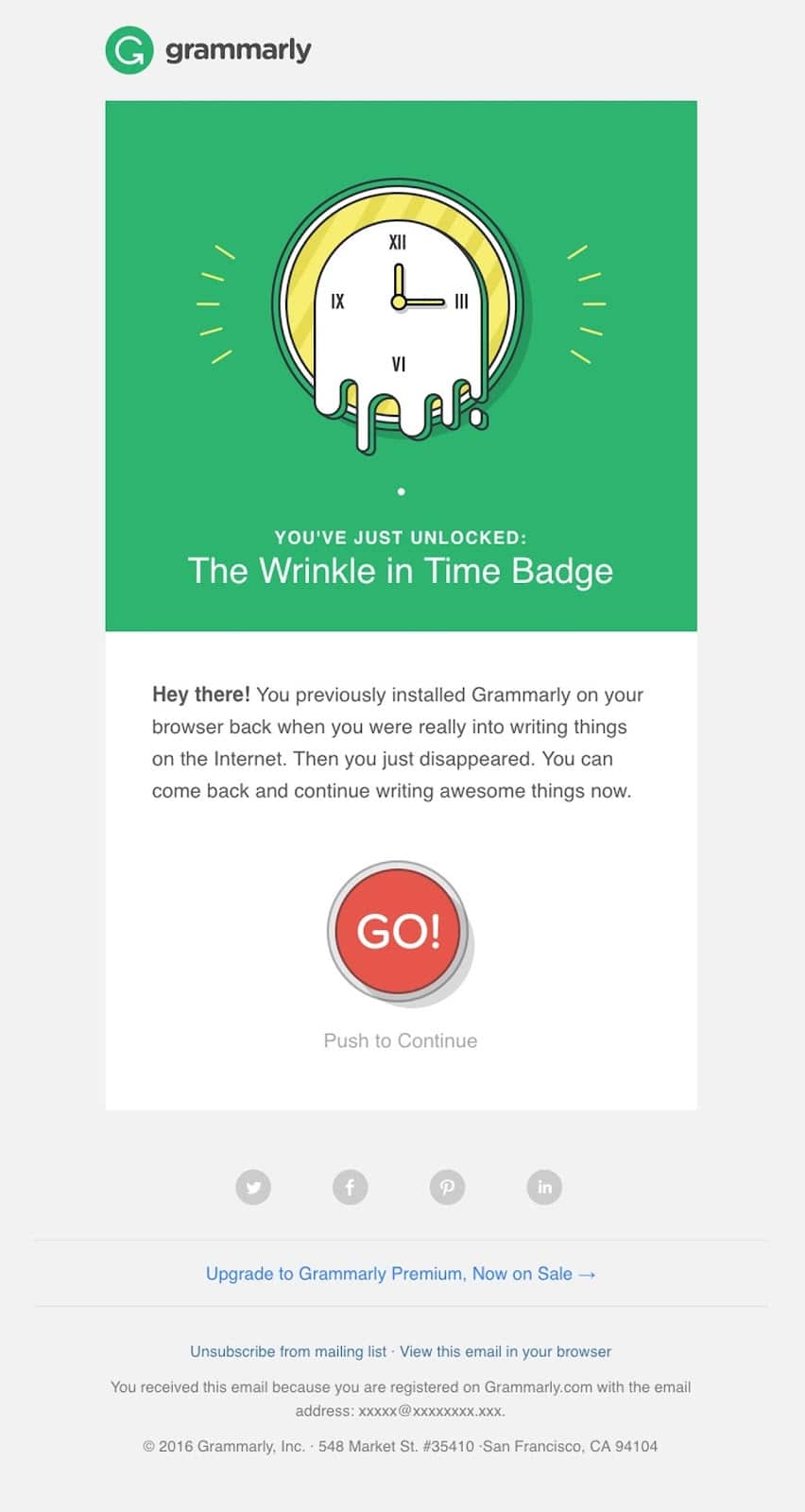
Source: Really Good Emails
4. DO format for mobile
When you’re formatting email messages for mobile, you’re making sure they’ll display correctly for more people.
More than 50 percent of all email opens start on a smart device like a phone or a tablet. If your email looks weird or doesn’t load completely within seconds, most people delete it.
5. DON’T make the email too long or visually cluttered
Don’t agonize over written content. Around 80 percent of people don’t read emails in full. Most scan email content and only retain information that interests them.
Make sure not to add visual elements randomly. The design should be as purposeful as it is beautiful, highlighting all that’s important and ultimately drawing your eye to the CTA.
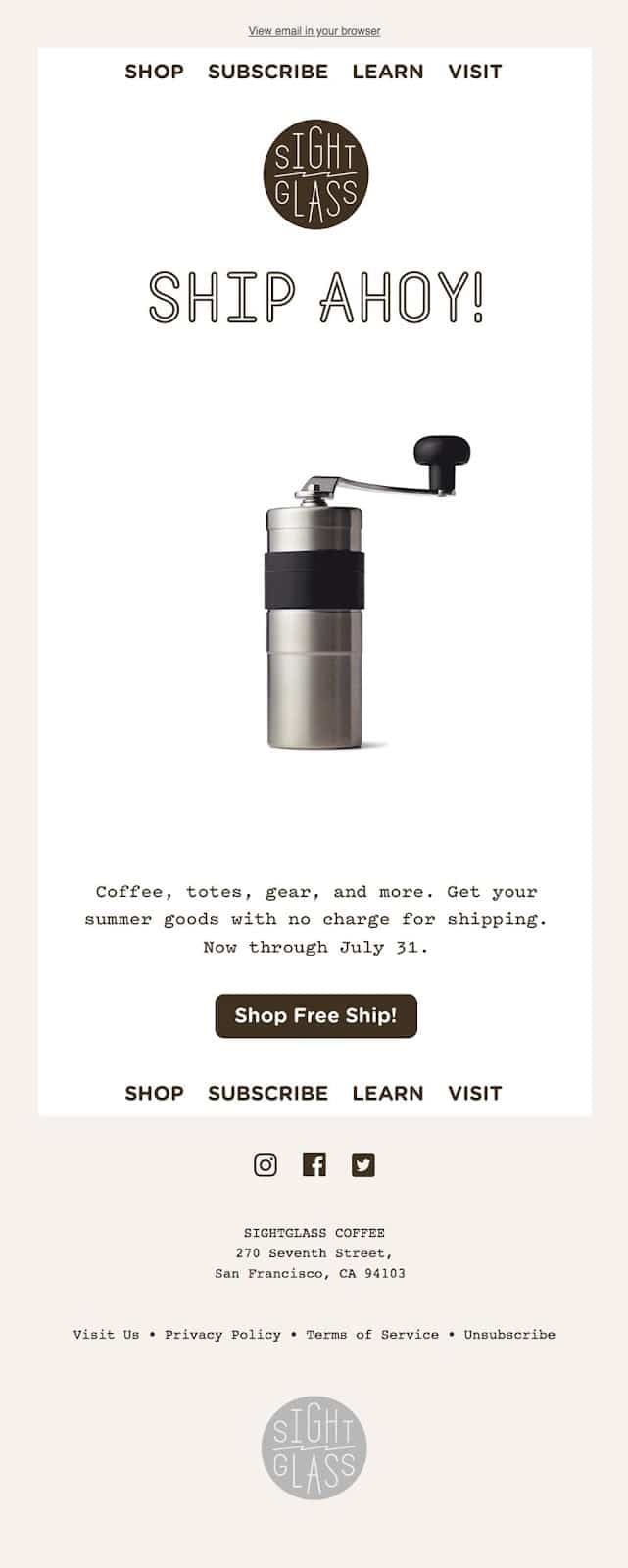
Source: Really Good Emails
6. DON’T use technical jargon or spam filter-triggering words
Buzzwords and industry-specific terms can be alienating. If you must use them, segment your list and add them to content for people who will understand what you’re saying.
On the other hand, spam filter trigger words and phrases are often in common language. Take special care to avoid using them. Read your content aloud to check if it sounds too generic or gimmicky.
7. DON’T rely solely on static content
Videos in email can increase revenue growth rate by almost 50 percent. Interactive content—quizzes, timelines, etc.—can result in twice the amount of conversions.
Not keen on using videos and more complicated multimedia? GIFs in emails are relatively lightweight but still pack an animated punch.
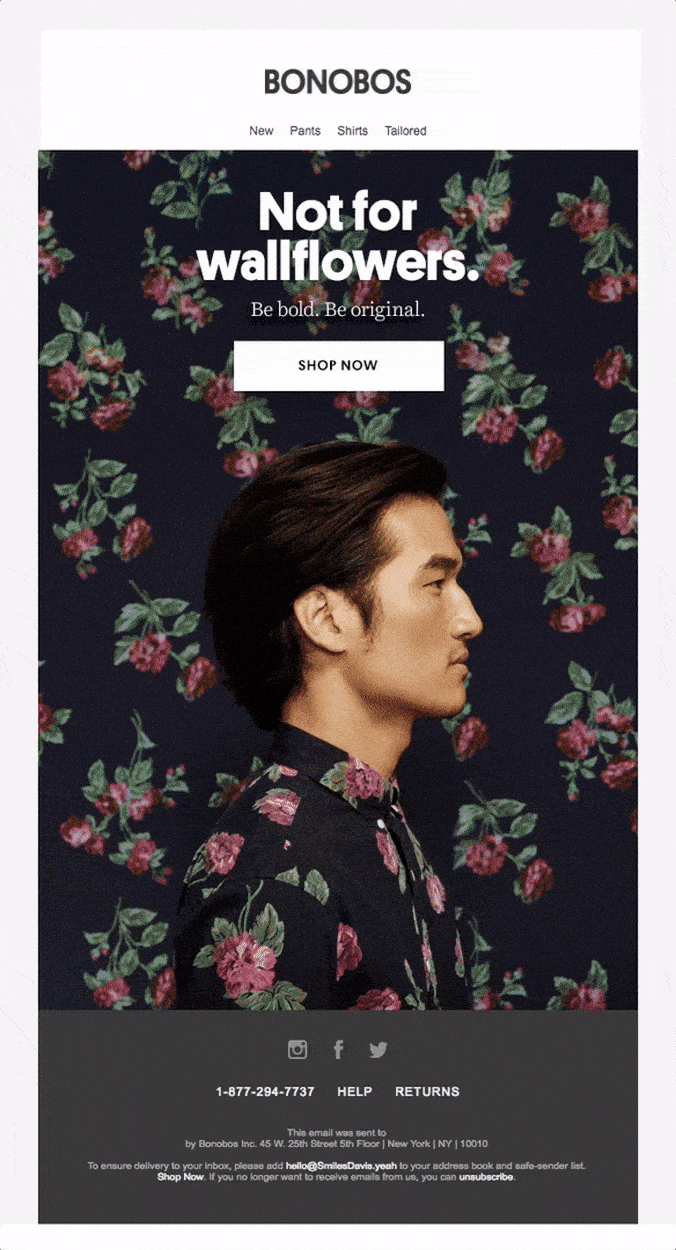
Source: Really Good Emails
8. DON’T send your email without double-checking for errors
Always check your work. The more you add to an email the more it’s likely to have a mistake somewhere: A broken link, a typo, or something worse.
After crafting an excellent marketing campaign, you don’t want to lose subscribers because of an avoidable error. Check again.
Wrap up
Email marketing best practices are forever fluctuating due to technological advancements and platform updates. But certain tips never go out of style.
In this article, we discussed the email do’s and don’ts for:
-
Subscriber list building
-
Setting up email marketing campaigns
-
Creating email content
Still not sure if your marketing campaign is up to snuff? Evaluate your work using Emma’s helpful email preflight checklist.
MOST RECENT ARTICLES
Want to engage your audience and grow your brand? Try Emma's robust easy-to-use product today.












